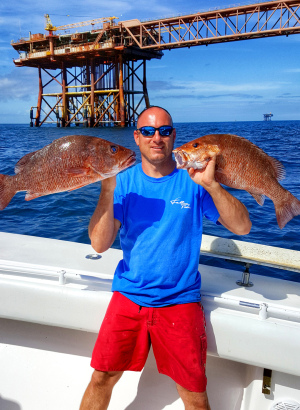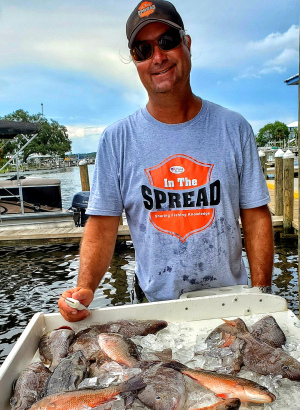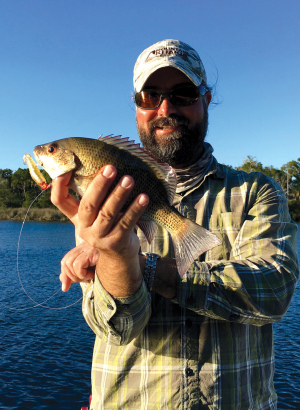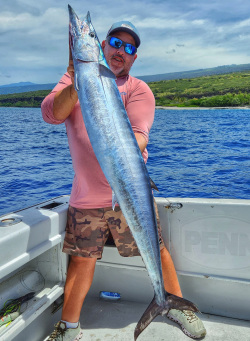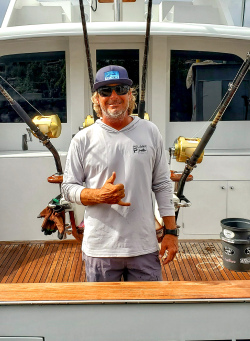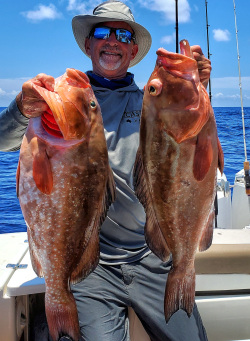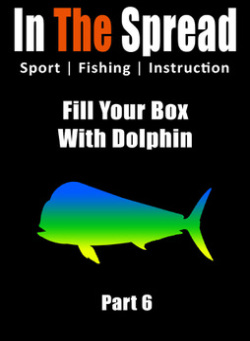Capt. William Toney, a fourth-generation fishing guide, teaches how to catch inshore mangrove snapper. He teaches how to locate productive structure, set up on it, and use various baits and jig heads. Toney emphasizes the importance of structure, live shrimp, and jig heads for optimal fishing. This instructional video is a valuable resource for anglers looking to catch mangrove snapper in the Gulf Coast.
Mangrove Snapper - Fishing Inshore with William Toney
(00:23:59)- Inshore mangrove snapper fishing is a great option for shorter trips or rougher seas
- Mangrove snapper are named after their preference for living around mangroves when young
- Snapper are bottom dwellers but can be found schooling higher during feeding periods
- Capt. William Toney shares his expertise on catching mangrove snapper inshore
- Tips include rigging, bait selection, bite identification, and spot hopping
When you're looking for a shorter fishing trip or the seas are a bit rough, inshore mangrove snapper fishing is an excellent choice. Also known as gray snapper, these fish are not only fun to catch but also delicious to eat. In this video, Capt. William Toney, an experienced Florida fishing guide, shares his tips and techniques for catching mangrove snapper inshore.
Why Mangrove Snapper?
Mangrove snapper, also known as gray snapper, are a popular target for inshore anglers in southern coastal waters, particularly in Florida. The name "mangrove snapper" comes from the fish's tendency to inhabit the roots and structures of mangrove trees during their juvenile stage. Mangrove forests provide young snapper with shelter, protection from predators, and an abundance of food sources, making them an ideal nursery habitat.
Inshore fishing for mangrove snapper typically yields fish in the 14-15 inch range, weighing around 2-3 pounds. These younger fish are the ones most commonly caught by anglers fishing near mangroves, seawalls, piers, and other inshore structures. While these fish may be smaller than their offshore counterparts, they are still highly sought after for their delicious meat and fighting spirit.
As mangrove snapper mature, they begin to migrate offshore to deeper waters, such as reefs and wrecks. In these offshore habitats, the fish can grow much larger, with some specimens reaching weights of up to 20 pounds. However, targeting these larger fish often requires longer boat rides, specialized gear, and more challenging fishing conditions.
The beauty of focusing on inshore mangrove snapper is the accessibility and convenience it offers to anglers. Inshore fishing typically involves shorter boat rides, less fuel consumption, and the ability to fish in more sheltered waters, making it an excellent option for anglers with smaller boats or those who prefer a more relaxed fishing experience. Additionally, inshore waters often have a higher concentration of snapper, allowing anglers to catch more fish in a shorter amount of time.
Moreover, the taste and quality of the meat from inshore mangrove snapper are often considered superior to that of their larger offshore counterparts. Inshore fish tend to have a milder, sweeter flavor due to their diet of shrimp, crabs, and other small crustaceans found in the mangroves. The smaller size of inshore snapper also makes them easier to handle and clean, making them a favorite among anglers who enjoy cooking their catch.
Targeting mangrove snapper in inshore waters offers anglers a unique and rewarding fishing experience. While the fish may be smaller than those caught offshore, the convenience, accessibility, and exceptional taste of inshore mangrove snapper make them a highly sought-after target for anglers of all skill levels.
Behavior and Habitat
Mangrove snapper are known for their preference for structure-rich environments, which provide them with shelter, protection, and access to food sources. While these fish are primarily bottom dwellers, they exhibit interesting behavior patterns that anglers can use to their advantage when targeting them.
During most of the day, mangrove snapper tend to stay close to the bottom, hiding among the structures and waiting for prey to come within striking distance. They are ambush predators, relying on their keen eyesight and quick reflexes to catch small fish, crustaceans, and other prey that venture too close to their hiding spots.
However, during feeding periods, which often occur during low light conditions such as dawn and dusk, mangrove snapper can be found schooling higher in the water column. This behavior is believed to be a response to the increased activity of their prey during these times. Small baitfish and crustaceans are more likely to be moving about in the open water during low light conditions, making them easier targets for the snapper.
Anglers who understand this behavior pattern can adjust their fishing techniques accordingly. When fishing during the day, it is often most effective to present baits close to the bottom, near the structures where the snapper are hiding. Techniques such as bottom fishing with live or cut bait, or using vertical jigging methods with small lures, can be highly effective in enticing the snapper to bite.
During low light periods, anglers may have more success by presenting their baits higher in the water column, where the snapper are more likely to be actively feeding. Techniques such as freelining live bait, using popping corks, or even casting small lures and retrieving them at varying depths can be effective in targeting the schooling snapper.
When it comes to finding mangrove snapper inshore, anglers should focus their efforts on areas with abundant structure. Piers, bridges, and jetties are prime locations, as the pilings and supports provide excellent hiding spots for the snapper. Rock piles, oyster beds, and shallow reefs are also highly productive, as they offer a combination of shelter and food sources that attract both snapper and their prey.
In addition to these larger structures, anglers should also pay attention to smaller, more subtle features such as potholes, ledges, and drops in the bottom contour. These areas can often hold concentrations of snapper, particularly during periods of strong tidal flow or when baitfish are being swept along by the current.
By understanding the behavior patterns and habitat preferences of mangrove snapper, anglers can greatly increase their chances of success when targeting these highly sought-after inshore gamefish. Adapting fishing techniques to match the snapper's daily movements and focusing on structure-rich areas are key to consistently catching these delicious and hard-fighting fish.
About Capt. William Toney
Capt. William Toney is a highly experienced fishing guide who has dedicated his life to exploring and mastering the inshore and backcountry waters of Florida. Born and raised in the Sunshine State, William has been fishing these waters since childhood, giving him an unparalleled understanding of the region's diverse fisheries and ecosystems.
Based in Homosassa, Florida, a small coastal community on the state's Nature Coast, Capt. Toney is perfectly positioned to take advantage of some of the most productive inshore fishing grounds in the region. The Nature Coast, which encompasses the coastal areas of Citrus, Hernando, and Pasco counties, is renowned for its pristine estuaries, expansive seagrass beds, and thriving populations of inshore gamefish.
From his home base in Homosassa, Capt. Toney has easy access to world-class fishing opportunities for a variety of species, including redfish, snook, spotted sea trout, and mangrove snapper. The area's extensive network of backcountry creeks, oyster bars, and mangrove-lined shorelines provides the perfect habitat for these highly sought-after fish.
In addition to his intimate knowledge of the Nature Coast fishery, Capt. William Toney has also traveled extensively throughout the southeastern United States, fishing in a variety of inshore environments from Louisiana to North Carolina. This diverse fishing experience has allowed him to hone his skills and adapt his techniques to target a wide range of species in varying conditions.
Whether he's poling his skiff across a shallow grass flat in search of tailing redfish, or presenting live baits to snook hiding among the mangroves, Capt. Toney's expertise and dedication to his craft are evident in his consistently successful fishing trips. His passion for sharing his knowledge and love of fishing with others has made him a highly sought-after guide among anglers of all skill levels.
With his lifetime of experience, in-depth understanding of the Nature Coast fishery, and dedication to providing his clients with unforgettable fishing experiences, Capt. William Toney has established himself as one of the premier inshore fishing guides in Florida.
Fishing Tips for Grovers
- Rigging: The mangrove snapper fishing rig is simple, consisting of a fluorocarbon leader and a light jig head. William emphasizes the importance of choosing the right jig head and lure color for inshore fish.
- Bait: While finger mullet, sardines, pinfish, and crabs are all effective baits, live shrimp is the top choice. William shares tips on how to hook live shrimp on a jig head for optimal presentation.
- Bite Identification: The classic mangrove snapper bite is a series of pecks or taps, followed by the feel of weight on the line. The way they fight is also a telltale sign that you've hooked a snapper.
- Spot Hopping: When less desirable fish start taking your baits, it's time to move. Spot hopping is a common strategy in mangrove snapper fishing.
Catching mangrove snapper inshore isn't difficult, but it does require attention to detail. Capt. William Toney quickly breaks down how to position your boat around structure without disturbing the fish while still being able to present your baits effectively. By following the information shared in this In The Spread video, you'll be well on your way to becoming a better inshore fishing angler.
What is the best time of day to fish for mangrove snapper inshore?
Mangrove snapper can be caught throughout the day, but the best times tend to be early morning and late afternoon when they are most actively feeding.
What is the minimum size limit for mangrove snapper in Florida?
The minimum size limit for mangrove snapper in Florida is 10 inches total length, with a daily bag limit of 5 fish per person.
Can I use artificial lures for mangrove snapper?
While live bait is the most popular choice, mangrove snapper can also be caught using artificial lures such as soft plastics and small jigs.
How do I properly handle and release mangrove snapper?
When catching and releasing mangrove snapper, it's essential to handle them carefully to minimize stress and injury. Use wet hands or a dehooking tool to remove the hook, and return the fish to the water as quickly as possible.
What other species can I expect to catch while fishing for mangrove snapper inshore?
When targeting mangrove snapper inshore, you may also encounter other species such as redfish, snook, sheepshead, black drum, and flounder.
User Reviews
Captain William Toney
Captain William Toney, a Florida native, is a fourth-generation fishing guide known for his expertise in Redfish, Sea Trout, Mangrove Snapper, Snook and other fish species. He is a licensed and insured guide, a Homosassa Guide's Association member, and hosts 'In The Spread', an online fishing instruction platform. Toney's expertise in redfish, tides, and bait presentation is unparalleled, and he shares his knowledge on seasonal fish migration patterns and tidal flows. His dedication to passing on his knowledge to younger generations is invaluable.
Read more
